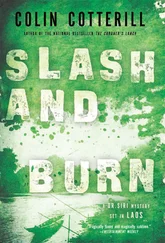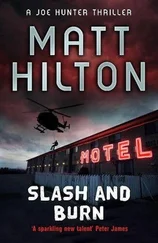“I picked this up from a local guy in Redondo Beach,” he said. “He makes them by hand. Try it out.”
It looked good: it was an amazing flame-top 1959 Les Paul replica with no pick guard, and two Seymour Duncan pickups. I felt it out and I liked it, but I didn’t get to plug it in until I arrived for my first session at Take 1.
I have romantic memories of those days at Take 1: from the first to the last moment, the entire process was magic to me. It was a small place with no frills—basically just a glorified home studio, but it was my first time recording guitar parts, and what we accomplished there can never be duplicated.
The moment I plugged in my new guitar I thought it sounded pretty good; I was ready to find the right amp. We started going through different Marshall heads—many of them actually, and it was an arduous process. I remember taking every rental amp, putting it in the studio room, miking it, and plugging in. I’d play a few chords, then my tech, Mike Clink, and I would tweak the head, then I’d play a few more. Mike might make some adjustments in the control room or come out and move the positions of the microphones, then I’d play a few more chords and we’d do it all again. It was all entirely worth it. Mike Clink is such a genteel and laid-back guy that he just let me do what I needed to do even if it wasn’t necessary: I kept renting and returning amps; we went through about eight before I found the one that sounded exactly how I wanted it to. It was like an act of God because this amp wasn’t stock—it was a Marshall that had been customized by someone.
I used it on the entire record and I intended to make it mine when the sessions were done; I told the rental company that it had been stolen from the studio. Unfortunately, my own guitar tech returned it without telling me. Once S.I.R. received an amp that I’d reported stolen, they weren’t exactly ready to send it back out to me: when I called they told me that it had already been rented out to someone else.
Anyway, when I heard my guitar through that amp, I knew that it was right immediately; it was a truly magic moment. I plugged into it, as I had all of the others, and casually hit a few chords—and that was it. It was that perfect Les Paul/Marshall combination where the depth of the guitar’s tone and the crunch of the amp come together perfectly. It just sounded amazing .
“Hold on,” Mike said. “Don’t move. Don’t do anything .”
He made a few minor tweaks to the head and it sounded even better. And that was that—no adjustments were made to my guitar setup for the entire session—no mikes were moved, no knobs turned, nothing. We’d found the sound I’d been looking for and we weren’t going to lose it.
That guitar has been with me ever since. It was made by the late Jim Foot, who owned Music Works in Redondo Beach. He made about fifty of those Les Paul replicas entirely by hand with no detail overlooked. It became my only guitar for a while, and has become my mainstay in the studio ever since. It has sounded different on every record I’ve done, but it is the same exact guitar. It just goes to show how volatile recording is: the size and shape of a room, the soundboard used in recording, as well as the molecular quality of the air all play a part—humidity and temperature affect a recording tremendously. Where the guitar and amp is placed, how it is miked; all of these things can drastically influence the result.
I didn’t know any of that at the time, but I am glad that we didn’t move the amp or guitar one inch for the Appetite sessions—it was just fine where it was. But now I understand why I have never been able to re-create my exact sound on that record ever since. It is more than just setting up the same equipment in the same booth, because believe me many have tried. There has been a lot of interest in the equipment and the exact technical specs of the amp that I used for Appetite but it can never be replicated. I’ve actually played a modified Marshall amp that is supposedly identical, but even with that original guitar, it didn’t sound the same. It couldn’t—because I wasn’t in the same studio under the same conditions. Those sessions were one of a kind.
I DID ABOUT A SONG A DAY; I’D SHOW up, make myself a coffee and Jack Daniel’s—or was it a Jack Daniel’s and coffee?—and get to work. Izzy’s stuff was one take—there was no way he was going to come down and rerecord it, and he didn’t have to: his playing is so here and there, just the essence of great rhythm guitar, that spending too much time on it, or recording it on top of the live track, is just silly. Basically, what Izzy played was the simple heart of the songs, no matter who wrote them; if everything else was taken off one of our songs, you’d hear the grace of Izzy’s simple scratch rhythms.
As a unit, the entire band had a simple but effective way of playing together. Steven would watch my left foot to determine the tempo, and he’d look to Duff to cue every drum and bass fill. Those two had a really cohesive relationship—they would communicate the changes and subtleties of every single song through eye contact. Meanwhile, Izzy played all around the riffs that I’d be playing beside Duff: he and I would do Led Zeppelin–style single-note riffs while Izzy brought simple chord patterns that fell around the beat instead of on it. For every downbeat, Izzy had an upbeat. It made for a pretty complex-sounding rock-and-roll band, but at its core it was very simply executed.
The first song I worked on in the studio with my new rig was “Think About You” and the very last was “Paradise City.” Duff came down there and hung out every day, because now that I wasn’t doing dope, I’d switched to booze again with heartfelt abandon, so he and I were drinking buddies. I would pick Duff up at the apartment that he shared with Katerina on Crescent Heights and he and I would show up at the studio around noon. He’d hang out, listening in until I wrapped it up sometime in the evening, then we’d go out looking for trouble in Hollywood every single night. At the time, trouble was most easily found at the Cathouse.
The Cathouse inhabited the building that used to be Osco’s, the ridiculous disco that was featured in the movie Thank God It’s Friday . I remember Osco’s being the spot for all of those “crazy” people when I was a kid, but I never went in there. It was enough for me to see it from across the street: all of their matching slacks and coats, silk shirts and thin belts, shiny shoes and flashy girls in red, blue, or yellow silky dresses, bouncing all around. By then the space looked different, and now it was ours; it more or less became our club, though we didn’t realize it at first. It was as if we already had a table there in the VIP, but nobody had told us so.
We were sort of shy and meek when we first started hanging out there until we realized how much the owner, Riki Rachtman, really wanted us there. Once we discovered that we could get away with anything at that place, we exchanged shy and meek for crazy and out of control; it was as if we’d been given psycho carte blanche. I was known to break a beer bottle over my head for no reason when the mood caught me and I thoroughly enjoyed stair-diving headfirst down the long flight of stairs leading up into the Cathouse, so long as it was packed with people filing in. Whenever I watch Jackass it makes me nervous. I never put a fishhook through my cheek but I definitely had that mentality back then.
I remember one night Mike Clink politely asking if he could come down and hang out with us, and he showed up on a first date with the girl that he eventually married. I did my best to behave and make conversation, but as I walked away from them, in a very Sid Vicious type of move, I stumbled into a huge plate-glass window, which shattered all over me.
Читать дальше
Конец ознакомительного отрывка
Купить книгу




![Сол Слэш Хадсон - Slash. Демоны рок-н-ролла в моей голове [litres]](/books/387912/sol-slesh-hadson-slash-demony-rok-n-thumb.webp)


